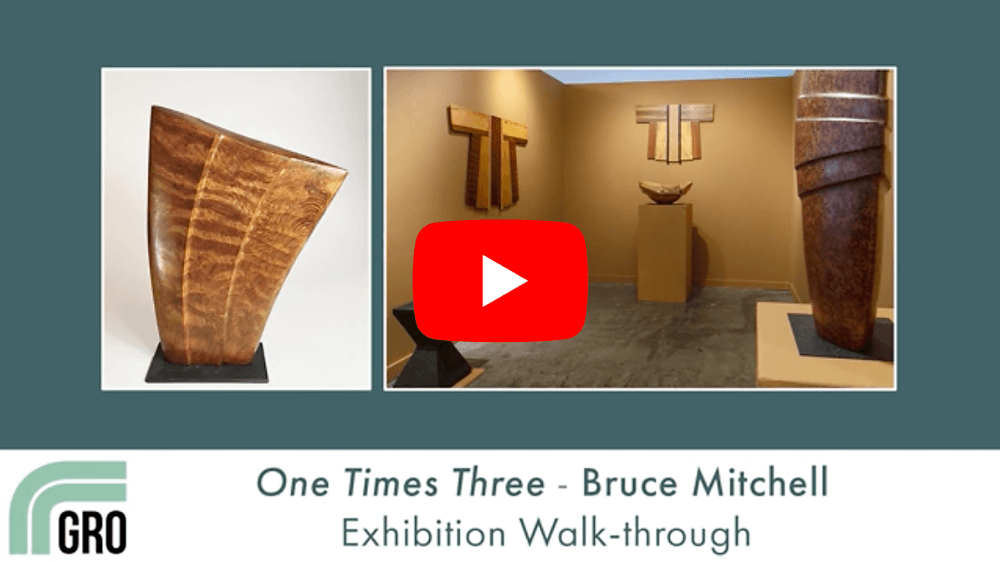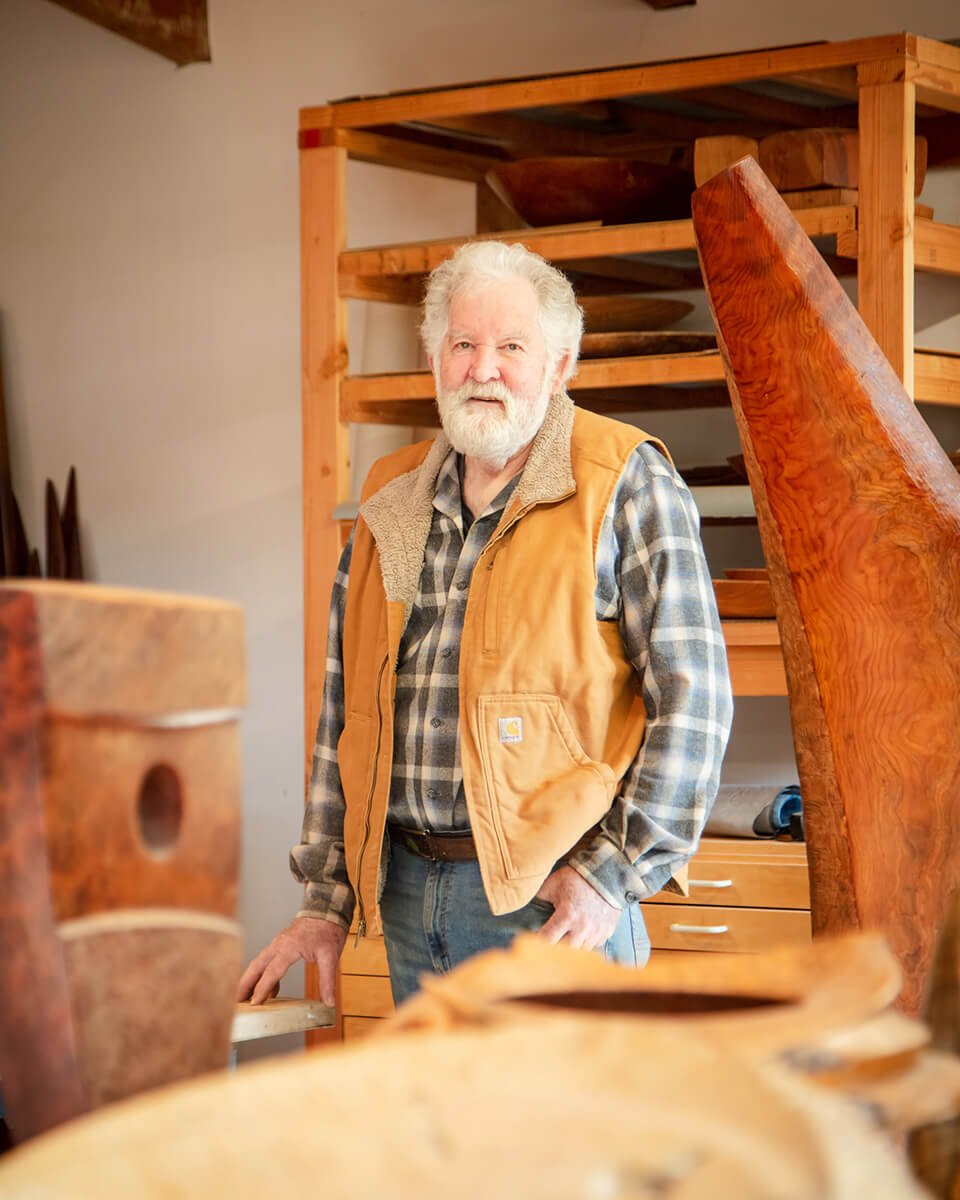Gallery Route One presents One Times Three by member artist, Bruce Mitchell. The title expands on the three mediums included in this exhibit—wood carvings, paintings, and works on paper.
Mitchell describes the works in the exhibit as dreamscapes, visualizing in three dimensions and explaining, He further elaborates that his process is a direct result of responding to whatever ideas come to him, coming from the place of dreamworlds and archetypes, analogous to several cultures around the world. He adds,
“My greatest desire is for viewers discover something of their own…that they will have their own experience but also encounter the same joy I had in the creation of the piece. I want viewers to see the range of what is possible…not just for me but for them as well.”
Artist Interview with Bruce Mitchell
Gallery Route One member artist, Bruce Mitchell, has been working with wood for over four decades and is widely known for his lathe turned vessels, sculptural tables, benches, and abstract forms. His current exhibition—One Times Three (on view through April 30)—expands on this practice and includes two other mediums: paintings and works on paper. Mitchell describes the works in the exhibit as dreamscapes, visualizing in three dimensions. He further elaborates that his process is a direct result of responding to whatever ideas come to him, coming from the place of dreamworlds and archetypes, analogous to several cultures around the world.
Q: Do you recall when art first made a significant impact on your life?
A: When I was ten years old, my family and I traveled to the DeYoung Museum to view the VanGogh retrospective. He was just ferocious…I mean, there was so much trapped within him that was just coming out of him in such an extraordinary way. It’s really difficult to say how deeply it had an effect on me.
Q: Can you describe the decision to show the array of mediums in your current exhibit?
A: I decided to show a range of work because it tells a better story of how I developed my work personally and the sites of inspiration that are still endless. This whole group of work is really a celebration of working very intimately with these materials for many decades. I haven’t set limits on myself in terms of forms or genres, and that has kept my curiosity going. I feel like I am just responding to ideas that come to me, and I want to give them credit for being present.
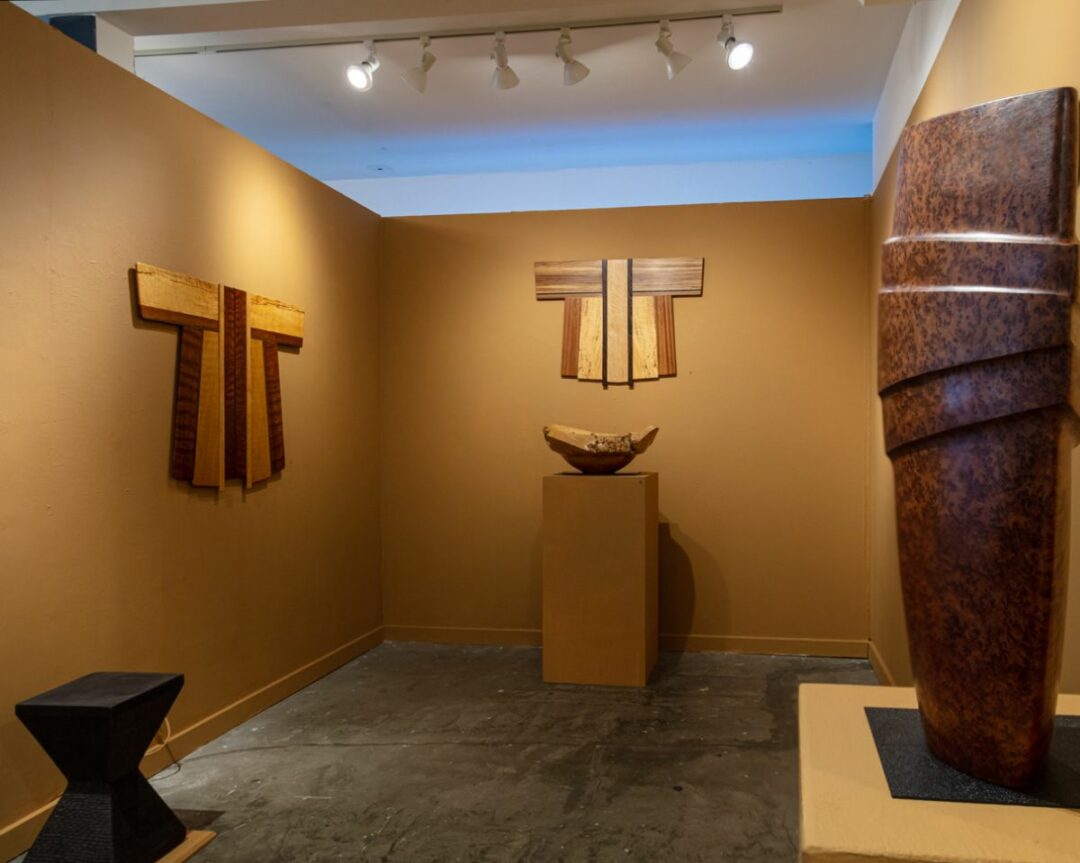 Partial installation view of Mitchell’s exhibition: One Times Three
Partial installation view of Mitchell’s exhibition: One Times Three
Q: You have described your work as often in direct response to ideas and symbols that are analogous to many global cultures. Can you provide an example?
A: Indigo fabric is a great example Cultures that are tens of thousands of miles apart found different plants to produce the same thing all by themselves. So in a sense, it’s kind of an analogy for me that I studied so many different art forms from cultures all around the world. There’s beauty and function combined.
Q: You are known for the sculptural quality of your wood carvings. How did the decision to begin working with flatter works, specifically the “Kimono Cho” pieces?
A: Japan has been on my bucket list forever, and I’ve studied the country’s architecture, art, music, poetry, and textiles for some time. After seeing an exhibition of 17th-century kimonos at the Metropolitan Museum of Art in New York, this idea continued to germinate in my mind. The Japanese kimono has been one of the highest expressions of textile art for more than twelve hundred years. Being an object that is elegant in both form and function, its shape also mirrors the exquisite symmetry of butterfly wings. And as butterflies represent joy, longevity and transformation in Japanese folklore, there is reason to believe that the kimono’s design pays homage to these enchanting creatures and the mythical powers they are believed to possess. “Cho” is the Japanese word for butterfly and because I’ve made these wood kimonos with book-matched panels that mimic the lovely symmetry of butterfly wings, it made perfect sense for me to use that word for the title of these new works: KIMONO CHO. I use a painter’s approach to this way of woodworking by selecting and arranging veneers of contrasting hues and grain patterns to enhance each other in a way that I hope will create an evocative composition. Fashioning these KIMONO CHO from wood gives me a certain freedom to experiment with the classic kimono form to produce a series of new pieces that are inspired by the exquisitely woven masterworks of the past but will have their own unique identity.
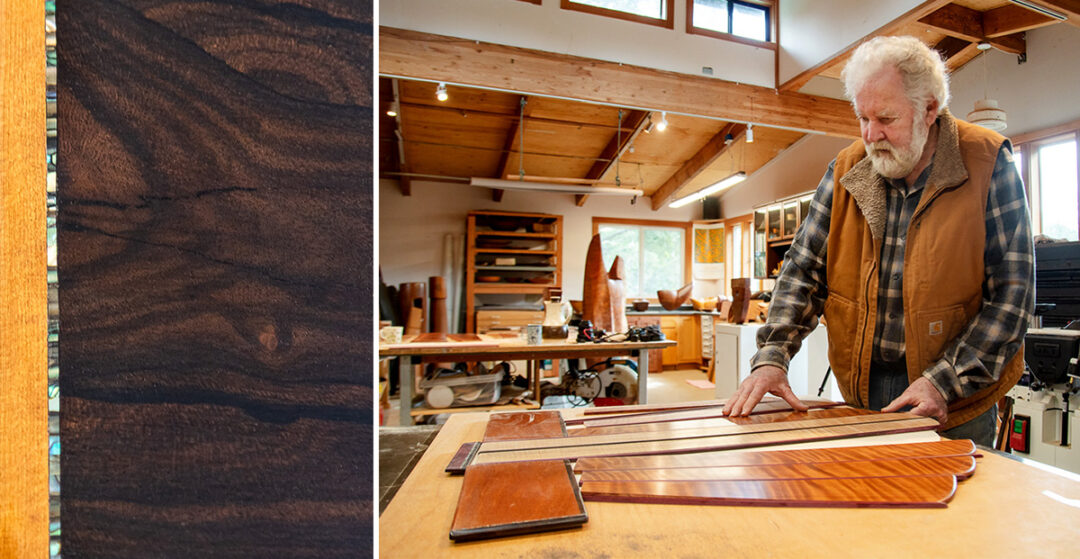 (Left) Detail from “Kimono Cho #2-4”; (Right) Bruce Mitchell in his studio
(Left) Detail from “Kimono Cho #2-4”; (Right) Bruce Mitchell in his studio
Mitchell’s work can be found in numerous museums and private collections throughout the United States including the permanent collections of the Renwick Gallery of the Smithsonian Institution, the Oakland Museum of Art, the High Museum of Art in Atlanta, GA, and several other museums.
To learn more about his work, please visit brucemitchellstudios.com

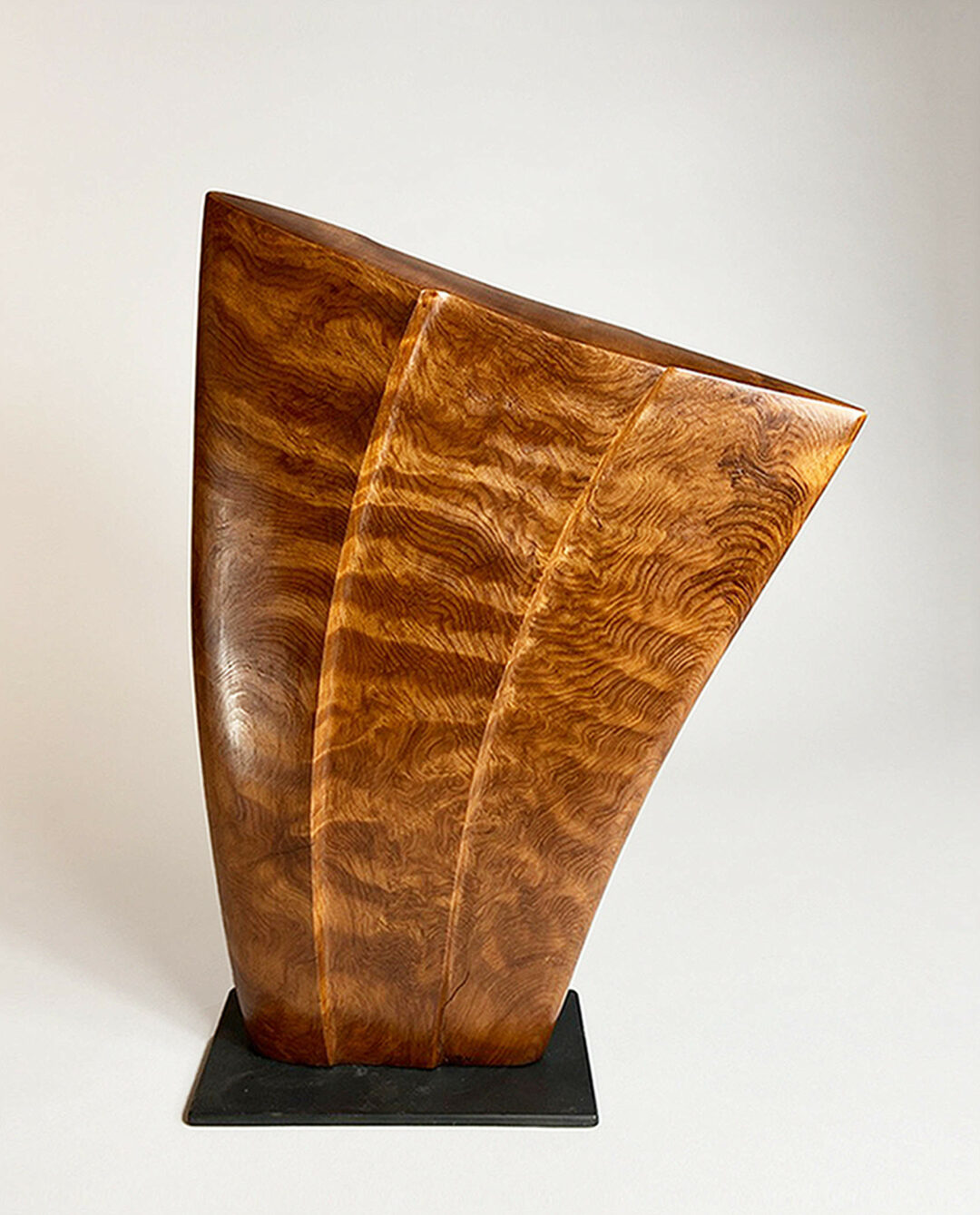

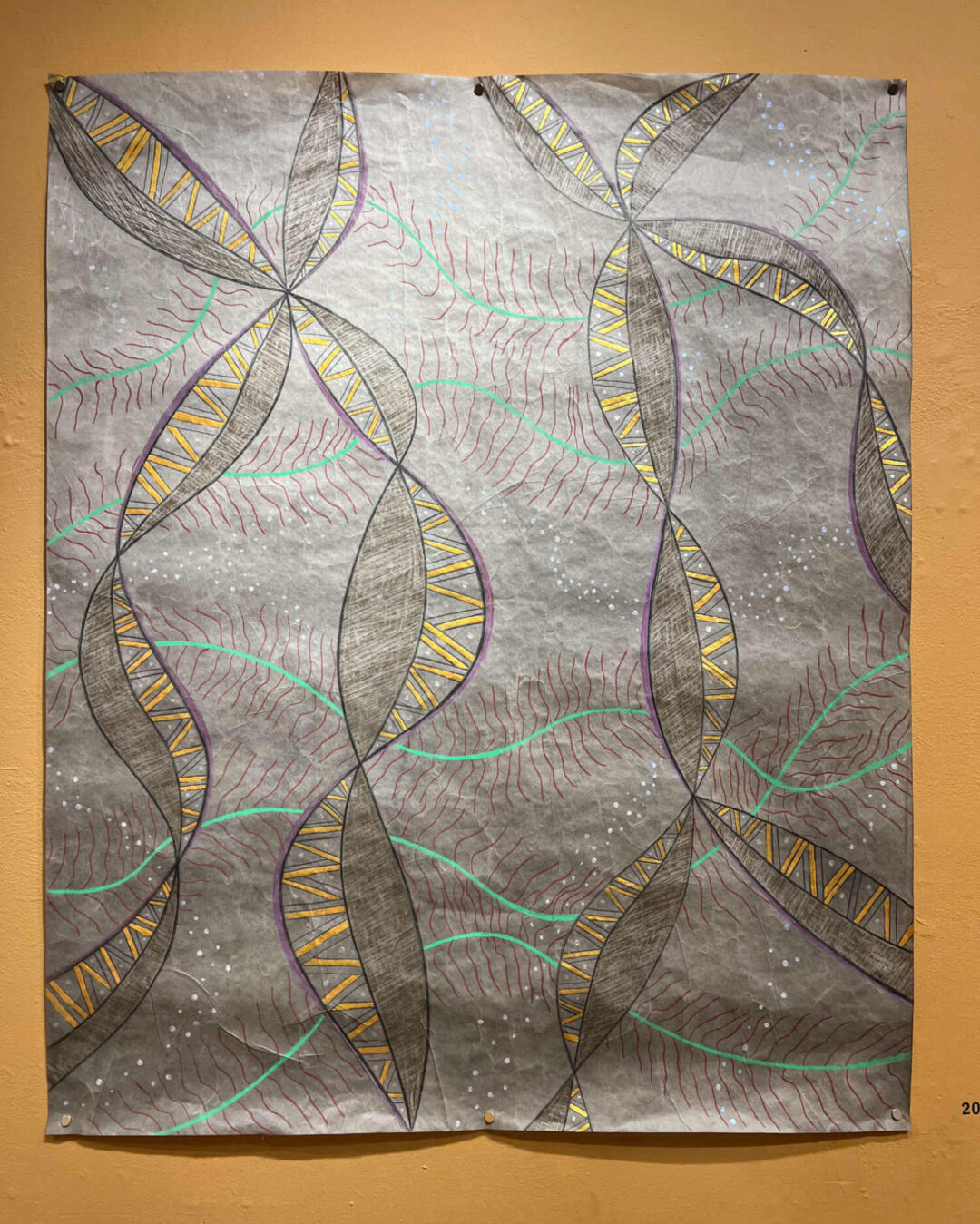

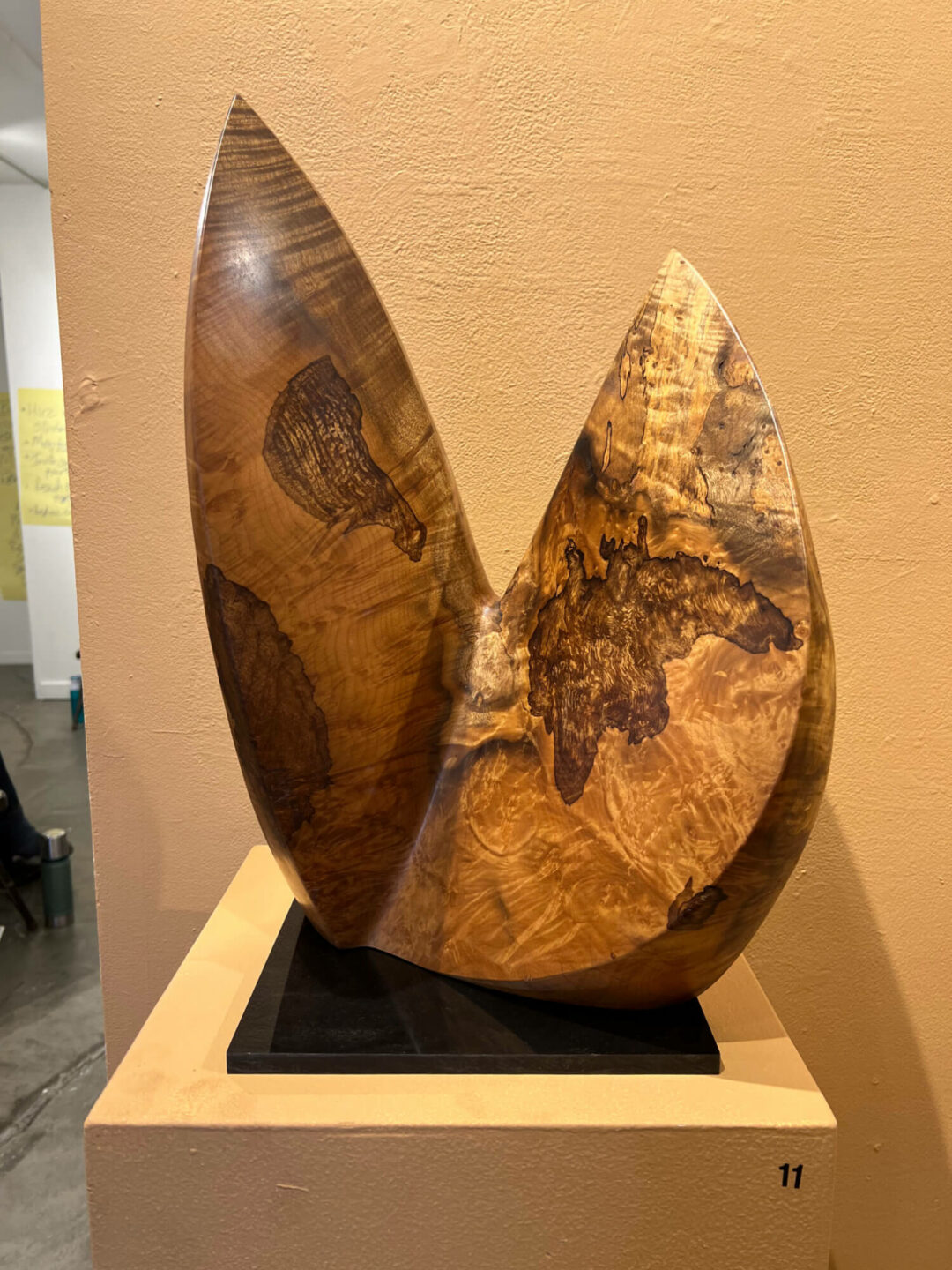
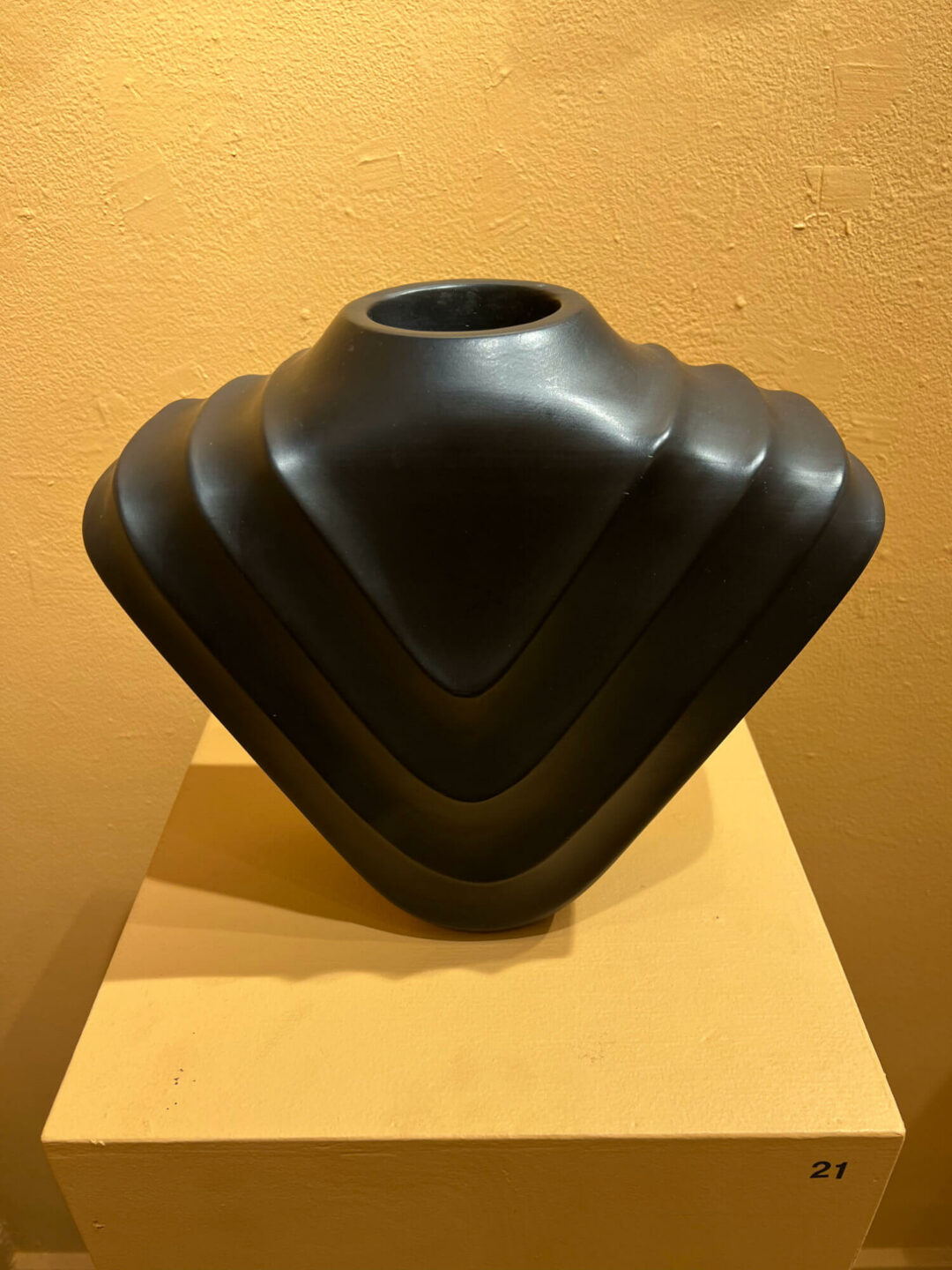
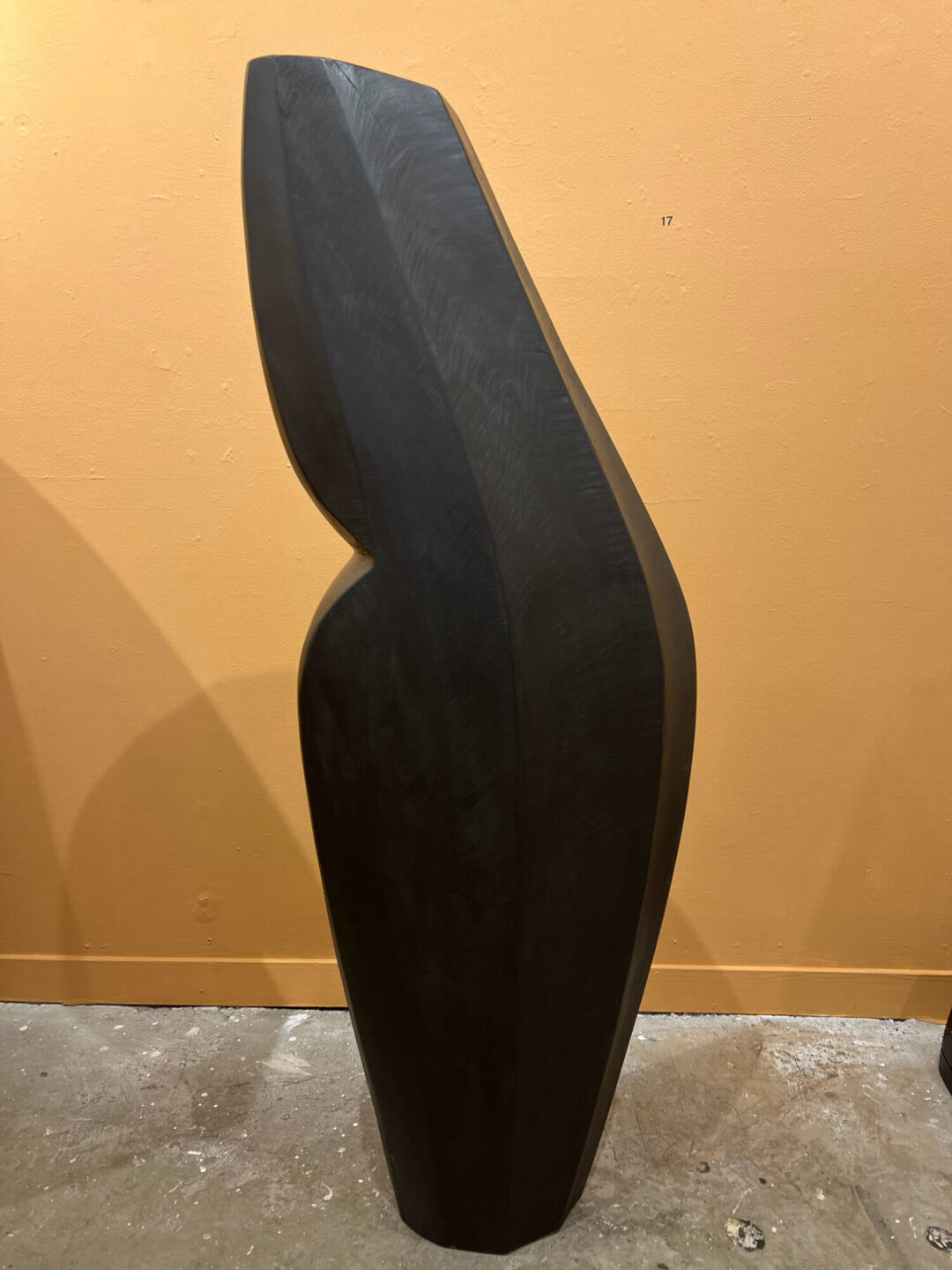
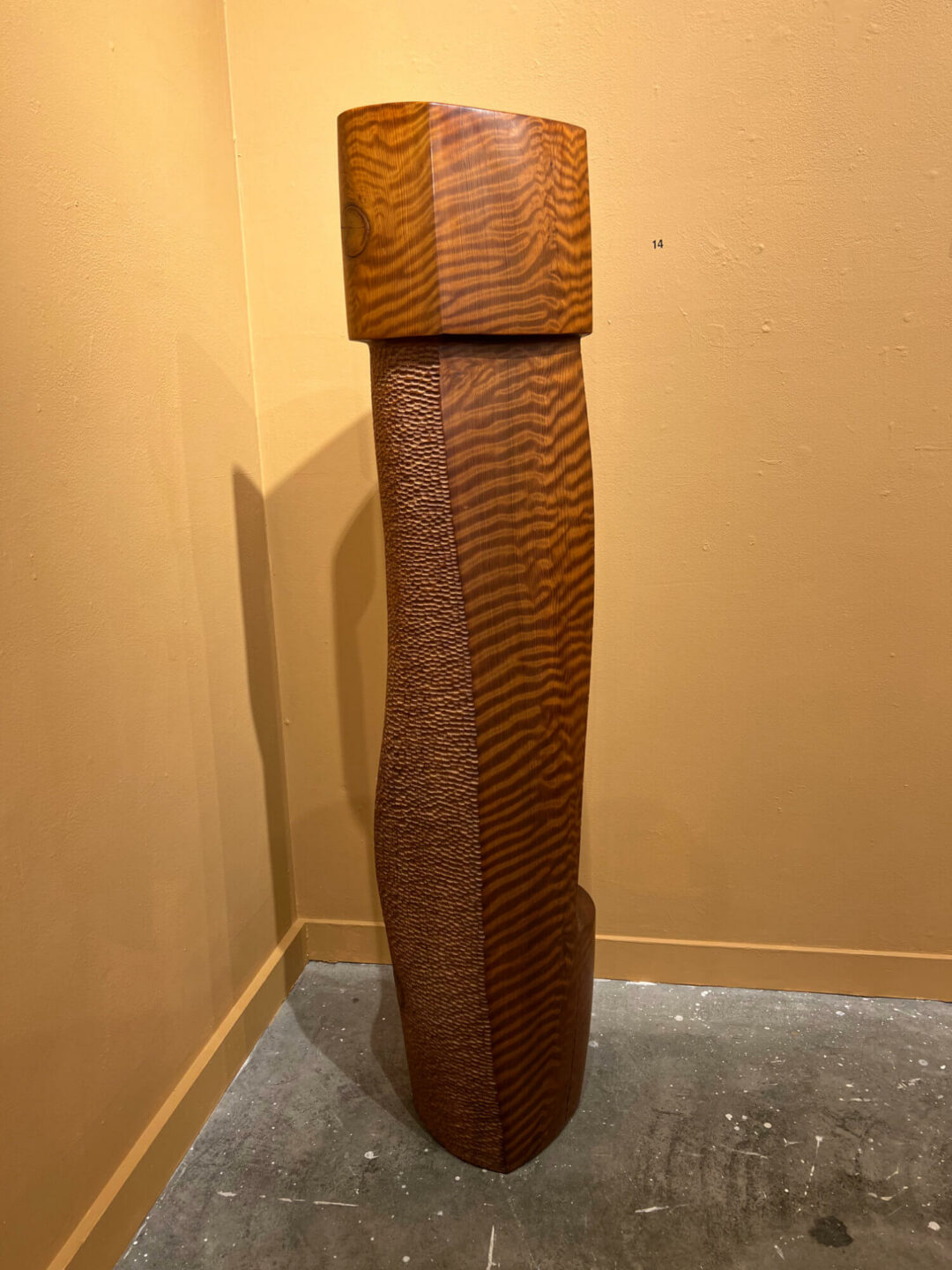
![Bruce Mitchell - SENTINEL [detail] - 2009 - Curly redwood - 55in × 12.5in × 7.25in](https://galleryrouteone.org/wp-content/uploads/2023/03/Bruce-Mitchell-SENTINEL-detail-2009-Curly-redwood-55in-×-12.5in-×-7.25in-1080x1440.jpg)
